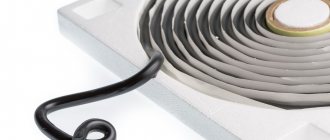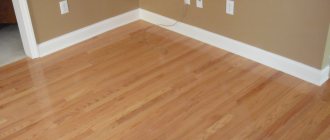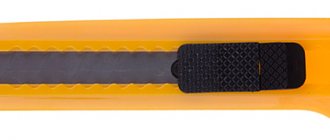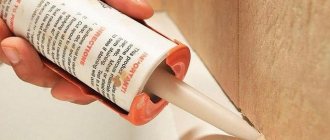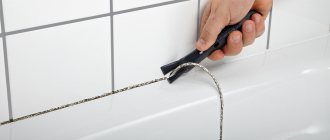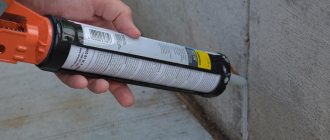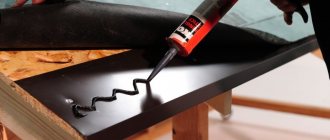Sealant for car headlights is used in the assembly after repairing the headlight unit. It acts as an adhesive and sealant, which provides protection against moisture, dust and corrosion of its metal parts.
Headlight glass sealants come in four main types: silicone, polyurethane, anaerobic and heat-resistant. Each of them has its own characteristics, as well as specific application.
Among domestic car enthusiasts, there are a number of the most popular products for repairing and/or sealing headlight glasses, which can be purchased at most car dealerships. The rating of the best sealants for car headlights will help you decide on the choice of a good product, and most importantly, apply it correctly.
| Sealant for gluing headlights | a brief description of | Package volume, ml/mg | Price as of summer 2022, Russian rubles |
| Abro WS-904R | The sealant tape is very easy to use, polymerizes well, has no odor and does not stain your hands. Hardens quickly. It is a butyl sealant for headlights. | 4.5 meters | 700 |
| Orgavyl | Bitumen sealant tape in black. It has high strength and good polymerization. | 4.5 meters | 900 |
| Dow Corning 7091 | Universal silicone sealant. Available in white, gray and black. Convenient packaging and high degree of sealing of the headlight. Stretches well. | 310 | 1000 |
| Done Deal DD6870 | A universal transparent silicone-type adhesive-sealant that can be used for different materials. It glues and seals the headlight well. | 82 | 450 |
| Permatex Flowable Silicone | Silicone sealant for headlights with operating temperature from -62ºС to +232ºС. It is characterized by good efficiency and ease of application. Resistant to harmful external factors. | 42 | 280 |
| 3M PU 590 | Polyurethane sealant for gluing glass. Can be used with different materials. Resistant to aggressive environments. | 310; 600. | 750; 1000. |
| Emphymastics RV | One-component polyurethane adhesive-sealant of high elasticity. Can be used for gluing windshields and headlight lenses. Low temperature range. | 310 | 380 |
| KOITO Hot Melt professional (gray) | Professional heat-resistant sealant for installation and repair of headlights. Used by such automakers as Toyota, Lexus, Mitsubishi. Can be reused after heating. | bracket 500 grams | 1100 |
If you place the headlight glass on a bad sealant or violate the technology of use, then you will face a number of unpleasant moments, from fogging to the appearance of corrosion on the reflector of the lamp contacts or deterioration in the throughput of the light beam.
Main types of sealants
Headlight sealant is available in different forms and with different base substances. The technical characteristics depend on the type of composition. To understand which sealant to use to glue headlights, you need to study each one.
Headlight sealant is available in different forms and with different base substances.
Silicone
The silicone type of composition can be used as a sealant for gluing the glass of front and rear headlights. Suitable for working with glass sunroofs and other car parts. The product has a good level of adhesion, resistance to vibration and high temperatures. However, it is not resistant to chemicals.
Used on plastic and metal surfaces.
The product has a good level of adhesion, resistance to vibration and high temperatures.
Polyurethane
The difference from the previous type is exposure to aggressive substances. Resistant to mold, mild acids and alkalis. The liquid consistency is well distributed over the base, creating a barrier against the penetration of external elements into the headlight.
Polyurethane sealant for headlights does not shrink, but does not perform well during vibrations due to poor elasticity. A long service life is ensured, which can reach 25 years.
Resistant to mold, mild acids and alkalis.
Anaerobic
The setting starts when the parts are connected, this simplifies the process of applying the composition. It is resistant to mechanical loads, vibrations, high temperatures, aggressive and chemical substances.
Resistance to mechanical loads, vibrations, and high temperatures is demonstrated.
Heat resistant
Thermal sealants for headlights are produced in two components. Before use, the substances from the tubes are mixed together. The purpose of the compositions is for connecting halogen lamps, where heating reaches +300 degrees. There are species that can withstand up to +400 degrees. Withstands chemicals. The layer dries in 8-12 hours.
Withstands chemicals.
Butyl
Butyl headlight sealant comes in thick strips. They are resistant to chemical elements, aggressive environments, and vibrations. Durability is 7-10 years.
The tape material is distributed over the surface, then the glass is pressed. A plus is the lack of need to wear PPE when working, due to its harmlessness.
They are resistant to chemical elements, aggressive environments, and vibrations.
Requirements for sealant
The sealant must be of high quality and this is a fact. Car headlight adhesive must meet the following requirements:
Reliability of fixation or degree of adhesion
This requirement is especially important in the case of gluing heavy glass filters. It directly affects the tightness, and, accordingly, the quality of operation of the device. The glue holds the parts together well, ensuring their reliable fixation even in conditions of strong vibration. Resistance under the influence of high temperatures, since the car body becomes very hot when exposed to direct sunlight for a long time
The temperature on the metal surface can exceed 80 degrees.
Often, many car enthusiasts are faced with the problem of how to remove old sealant from a car headlight if the previous one was of high quality? Accordingly, it is difficult to remove, but this is only an advantage. You can remove the old layer of glue using a special liquid product. Selected depending on the type of base. Let's consider all types in more detail.
Criteria for selecting sealant for headlights
The choice of which sealant to use for headlights is made taking into account the color scheme, operating temperature, degree of adhesion, and resistance to vibration. Ease of use is also an important criterion. Often the products set quickly, so you need to have time to spread the liquid composition over the surface in a thin layer.
An important criterion is ease of use.
Bonding level
Headlight adhesive must have a high level of adhesion to the base in order to withstand the loads exerted on the part. When choosing, pay attention to the type of material where the glass will be glued and the working conditions.
Headlight adhesive must have a high level of adhesion to the base in order to withstand the loads exerted on the part.
Anti-vibration properties
The car is constantly moving, so all elements are constantly exposed to varying degrees of vibration. Sealants for headlights are resistant to such loads, but you should pay special attention to the characteristics.
Sealants for headlights are resistant to such loads.
Ease of removal
To get a beautiful result without difficulty, it is required that excess particles can be easily removed from various materials on which they may fall during work.
To get a beautiful result without difficulty, it is required that excess particles can be easily removed from different materials.
Temperature resistance
This parameter is important because high temperatures occur during repair and operation. The level of resistance depends on the substance used in the base of the product.
This parameter is important because high temperatures occur during repair and operation.
Transparency
A transparent composition is required if you are going to repair the headlight locally. If it is installed on a base, then it will be possible to use black or tape types of products.
A transparent composition is required if you are going to repair the headlight locally.
Packaging volume
Packaging volumes vary; to choose the best option, take into account the volume and its cost. Shelf life and average consumption levels are also important.
Packaging volumes vary; to choose the best option, take into account the volume and its cost.
Cost and quality
Professionals say that the optimal choice would be to choose products that fall into the middle and expensive price range. Cheap options perform poorly during operation, missing external factors, or are not transparent enough. As a result, the headlights become dim.
Professionals say that the optimal choice would be to choose products that are in the middle and expensive price range.
Specifications
| Parameter | Value/Units |
| Physical type | solid |
| Color | Black |
| Smell | Oil |
| Flash point | 163 °C |
| Flammability | Not self-igniting |
| Explosion hazard | Not explosive |
| Relative density (at 20 °C) | 1.4 g/cm3 |
| Solubility | Insoluble |
| Organic solvent content | <2 % |
| Solid content | 98,8 % |
Popular headlight sealants
They decide on which sealant to install the headlight glass, taking into account the popularity of the compositions, among other things. There are a huge number of sealants for this purpose on the construction market, but it will be easier for a beginner to choose among the variety of options based on consumer reviews. There are five popular and high-quality products:
- ABRO WS 904;
- Dow Corning 7091;
- DoneDeal DD6870;
- 3M PU 590;
- Emfimastic PB.
It will be easier for a beginner to choose among a variety of options based on consumer reviews.
Instructions for use
In order for the repair to be of high quality, it is necessary to adhere to the rules of work. The gluing technology consists of the following steps:
- Remains of the old coating are removed;
- The surface is degreased and applied if a primer solution is included in the package;
- The liquid product is applied through a special tip or gun. The tape version requires heating and stretching along the base;
- The headlight is attached to the desired area;
- The element is compressed until the solidification process is completed.
In order for the repair to be of high quality, it is necessary to adhere to the rules of work.
How to use the composition correctly
Even the highest quality option will not provide adequate reliability if the work technology has been violated. Therefore, you need to follow a few simple tips in order to achieve a good result:
- The remnants of the old composition, if present, are sure to hit. This is done mechanically using a degreaser or other product.
- The surface to be bonded should be thoroughly cleaned of dust and dirt and degreased. If they are smooth, sanding may be necessary to improve adhesion.
Before gluing, the surface must be cleaned and degreased. - The instructions for using the sealant must be carefully studied before starting work. Follow the manufacturer's recommendations to eliminate any problems and get the desired result.
- After gluing, the parts must be secured using clamps or other devices so that the parts do not move during the polymerization of the sealant. It is imperative to follow the manufacturer's recommended drying time.
To speed up the hardening of the composition, you can use a hair dryer or any other heat source.
How to Remove Car Headlight Sealant
There are many options for how to remove excess sealant from the surface. The choice is made taking into account the working conditions. The techniques that can be used will be described below.
The choice is made taking into account the working conditions.
Using a hair dryer
Using a hair dryer, the layer heats up and eventually loses its durability. But the use of high temperatures is not allowed when working with a plastic base.
Using a hair dryer, the layer heats up and eventually loses its durability.
Using a knife or screwdriver
Working with sharp tools is simple, but if a layer is removed from parts that are visible and should be without flaws, then it is better not to resort to the method. Otherwise, you may leave scratches on the surface.
Working with sharp tools is simple, but if a layer is removed from parts that are visible and should be without flaws, then it is better not to resort to the method.
Use of solvent
Thinners can be used after heating and scraping work. Or applied in a separate way. Acetone or automotive thinner is suitable for removal. The layer is soaked in the product for 5-15 minutes, after which the sealant is removed.
Thinners can be used after heating and scraping work.
Using a body degreaser
This product does a good job of softening the sealant layer; when the composition has worked, the residue is removed using a rag and non-sharp tools.
This product does a good job of softening the sealant layer.
White spirit, solvent, nefras
These types of thinners can cope with removing the old layer of sealants. Also used as degreasers before new work.
They can cope with removing the old layer of sealing agents.
Using alcohol
The alcohol base is only suitable for working with pre-scraped layers when the joint has already lost its strength. Or alcohol is used to clean the headlights.
The alcohol base is only suitable for working with pre-scraped layers when the joint has already lost its strength.
Removing old sealant
Most often, when installing a new headlight, particles of the previous sealing compound are present on the base. Removing it can be a problem, especially if the product is polyurethane based. You must work carefully so as not to scratch the base or damage important elements. There are several ways to remove sealant:
- heat the dried composition with a hairdryer, carefully remove after softening (it is important not to melt the plastic on the optic covers),
- scrape off particles of sealant with a sharp knife or a flat-blade screwdriver,
- wipe with solvent.
When installing headlights, it is better to use proven, reliable sealants and strictly follow the instructions for their use - in this case, the optics will last a long time and will not cause problems on the road.
Mistakes when choosing and using sealants
To get a long-lasting result, a beginner needs to take into account common mistakes in choosing a sealant and its use. The following points are highlighted:
- Incorrect selection of product in terms of transparency and resistance to high temperatures;
- Working with an unprepared base;
- Weak compression force when anaerobic adhesives are used;
- Applying the product in a layer that is too thick;
- The sealant is applied to the old layer.
Incorrect selection of product in terms of transparency and resistance to high temperatures.
The process of gluing glass into a headlight
Before starting work, you need to disconnect the power from the headlight.
Then you need to carefully lift the plastic cover, which is attached to the headlight using clips, with a sharp flat object, and remove it. Next, you will need to remove the headlight
If the glass is broken, then you need to free the reflector from the remaining fragments.
The next step is to remove the old sealant. To do this, you need to heat the reflector using a hair dryer.
When the adhesive softens, you need to carefully scrape it off with a dull knife or other suitable object. During operation, you need to ensure that the chrome plating does not get wet and is not damaged, as this may cause the reflector to darken.
If you don’t have a hairdryer, you can use a solvent, which should be applied in small portions to the surface of the sealant. To ensure the job is done accurately, it is recommended to use a syringe. After 1-2 minutes, the adhesive composition will begin to dissolve, at which time you need to begin removing it from the surface of the reflector
It is important to prevent solvent from coming into contact with its chrome surface.
Gluing in new glass is done extremely carefully. As a binder you can use not only Poxipol, but also any universal or automotive sealant
The main thing is that it is transparent. If you decide to use automotive sealant in your work, you need to warm it up before applying it: put it on a heater or under hot water for 5-10 minutes. Before gluing, the surface of the headlight in the desired place should be degreased.
The sealant or glue is applied in a thin layer not to the glass, but to the headlight housing and allowed to dry for some time. The binder layer should be uniform and without breaks. After that, glass is applied to the adhesive strip, which must be fixed in the required position with tape or tape. After 24 hours, it will firmly stick to the headlight, and it can be safely installed in place.
Useful tips
When working in a garage where the heating is poor, it is better to warm up the sealant and base. Working with halogen headlights is difficult, so in this case it is better to resort to the services of specialists. The remaining adhesive is removed from the outer surface after the layer has hardened.
When working in a garage where the heating is poor, it is better to warm up the sealant and base.
Headlight glass sealant will help make repairs that are durable and unnoticeable. But when working, you should follow the technology; it is also important to choose the appropriate option, taking into account all the features of the material and operating conditions.
Properties
Abro headlight sealant has the following properties:
- thanks to its convenient shape, it ensures trouble-free, comfortable installation of any glass in the car;
- has excellent adhesion to any surface;
- does not flow;
- does not stain hands surrounding surfaces in the car;
- comfortable in using;
- is used sparingly;
- maintains flexibility and elasticity in any operating conditions;
- does not emit toxic compounds.
The tape is a high-quality analogue of original sealants from many automotive manufacturers.
